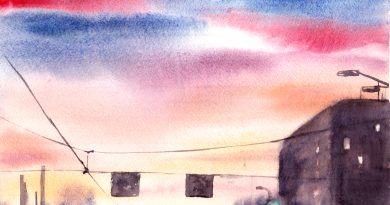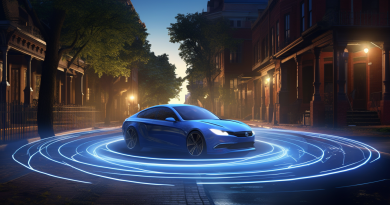The Somewhat Unsurprising Struggle of Detroit’s Streetcar
Figures out this week show that Detroit’s QLINE streetcar, once heralded as a bringer of progress to our struggling city, show that ridership is a fraction of what it was projected to be, as reported this week by Detroit Metro Times. Only 250 people– count ’em- have purchased annual passes, a testament to the unreliability of the system, whose six trains travel 3.3 miles at an average clip of just over 8 miles per hour. I am not sure, but I have a hunch that the city of Detroit sells more monthly transit passes to its employees!
Anemic ridership numbers are coupled with a slew of technical problems including what works out to about an accident per week. In sunny Ilitchville, where suburban property owners and suburban patrons of sportsball events alike couldn’t care less about transit accessibility and actually patronize Kid Rock’s restaurant, buses and streetcars alike are often stopped curbside waiting for Lyfts and Ubers to let out in front of the Pizzarena.
Whodathunk?
Possibly– just possibly- some of the folks who had been tirelessly advocating for a well-planned and well-connected transit system. Kate Lowe and Joe Grengs’ scathing 2018 report on the QLINE pointed out the unusual and overwhelming public opposition to the design insisted upon by the largely private M1 committee– but noted, on the flip side, their ability to actually get the thing done through nimble private sector cleverness. (More on this second bit in a minute.) Connectivity, transit advocates have argued, would include universal farecards, which we finally got this month, but just for buses. We are unclear on whether the QLINE is so much as working toward unification of their fare system with the complementary transit agencies, and the QLINE did not immediately respond for comment.

In duplicating the routes of the Woodward Bus, the most heavily used transit route in the state, and the various SMART and FAST buses to Oakland County (because why would we ever have a unified system across county borders? Oh, wait.), the QLINE will be acting as what an economist might call an inferior substitute rather than a superior substitute or a complement (wherein bus ridership is good for QLINE ridership and vice versa). In other words, given the opportunity to take the express SMART bus or even the local DDOT bus, people have no good reason to take the QLINE instead. Its low farebox recovery ratio of about 10% puts it below the effectiveness of both DDOT or GCRTA. But rather than complaining about it, I think it’s worth considering what the QLINE can do.
Prospects for a Hamstrung System?
To be clear, I’m a fan of trains and transit in most formats. Presented with the choice, I’d always pick a streetcar over a bus. Unless sufficiently antihistamined, I can get pretty bus-sick (not “sick sick,” but I get super dizzy and sleepy and slightly nauseous)– this was a major issue for me when I ditched my car for a year and a half. But the problem with the QLINE is that no one bothered to develop a system that worked in tandem with the existing infrastructure.
A few outcomes could “save” the QLINE. A couple are macroenvironmental: If oil prices return to the $100/bbl price range that they held fairly steadily from 2008-2014, rising gas prices will effect a strong increase in transit ridership. Restrictions on oil from Iran and Venezuela have already driven up prices and may continue to do so, though it’s yet not entirely clear what effect the global economic slowdown will have on oil production or demand. If Michigan Governor Gretchen Whitmer gets her 45-cent gas tax increase— which, of course, she won’t, Michigan being Michigan and being flat-out obsessed with both austerity and the sanctity of the automobile- this could be a boon to transit.
Another is 1) if the RTA proposal is revisited in 2020 and passes and 2) if, in the mean time, the QLINE can join the One Farecard To Rule Them All party that SMART and DDOT have been throwing. This would improve the connectivity with other modes of transit and would invariably increase ridership (especially if the QLINE could figure out how to successfully complement the Woodward bus route).
Increased public pressure on the Ilitch regime about the likes of their frankly illegal street closures, parking signage, and interference with the Woodward transit corridor could create a tremendous incentive to shift car-driven LCA attendance to DDOT and the QLINE, both of which provide connections to giant parking garages that could easily benefit from disrupting the Ilitch stranglehold on parking– say, a promo deal to park in a non-Ilitch garage and get a free QLINE pass for half or a third of the price of a Midtown parking lot near the LCA. Isn’t that how competition is supposed to work? To drive down prices and try and bust up monopolies?
Finally, going back to Lowe and Grengs’ report, the QLINE’s existence is, as in the case of many new streetcars and many monumental public projects in the austerity era, a testament to the good, the bad, and the mixed bag of public-private partnership. As evidenced in the tweet from TRU above, there is ample opportunity for connectivity with proximal employers within the Woodward transit corridor who wield an overwhelming amount of power in influencing development, and who represent hundreds of thousands of jobs within the 7.2 (and hundreds of thousands of commuters). While Dan Gilbert and players from the Quicken Family of Companies were instrumental in the development of the QLINE, they have been quiet RTA advocacy.
If the QLINE is going to survive– and move Detroit into a new era replete with successful mobility options- it’s going to require partnerships between the likes of the private M1 Rail folks, major institutions and employers, and a city government and DDOT interested in playing together. Another option might include returning to the free fare model that it explored when it first started and had much higher ridership numbers (something that has been explored for entire municipal systems in certain countries), though the subsidization of duplicated transit routes (when DDOT is still running on this same stretch with superior reliability) makes it a dubious pitch. In the mean time, you’ll see me out there riding my bike in that great protected bike line of the QLINE tracks!



